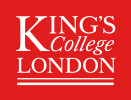© Pint of Science, 2025. All rights reserved.
We hear about stem cells all the time in the media, but do we truly understand what they are? How do stem cells work to fuel the body throughout life and what happens to the body when they don’t function properly? Could stem cells be the key to regenerate any human tissue damaged by injury, disease or ageing? Let’s find out how researchers use them in the lab as powerful tools for modern medicine.
Please note: this event has step free access.
Please note: this event has step free access.
Growing 3D tissues outside the body
Dr Shukry Habib
(Sir Henry Dale Research Fellow)
During our life time the tissues of our body get damaged. Exercise, eating well and reduced stress among other factors are important for leading a healthy life style. When we are healthy, many of our tissues have the unique capacity to repair and regenerate. Sometimes, our tissues cannot repair themselves anymore because of genetic factors, ageing or severe injuries. What can we do to fix it? Join Dr Shukry Habib to explore the pioneering methods in engineering human tissues in the lab to repair damaged organs.
The balancing act of stem cells
Dr Cynthia Andoniadou
(Lecturer in Stem Cell Biology)
Many organs in our body have cells capable of dividing, which make the different cell types needed for organs to function. These ‘stem cells’ need to balance their activity so as not to make too many or too few specialised cells. What happens when stem cells are more or less active than they should be? Too many, and tumours can form, while too few could trigger organ failure. Our lab aims to understand why this balance sometimes fails. We explore how stem cells might keep a tally on specialised cell numbers to time their divisions. Such information is invaluable knowledge for future therapies.
Stem Cell Hotel
Dr Davide Danovi
(Director, HipSci Cell Phenotyping Programme)
Development and maintenance of tissues are classic playgrounds for stem cells. These cells copy themselves, or specialise in one function such as carrying oxygen in the blood or contracting in muscles. Understanding what regulates and how to control these choices is very important to set up and identify therapeutics and model diseases. We are building a dedicated collaborative space where scientists from different paths can use instruments to obtain beautiful microscopic images, find out in detail what their favourite stem cells are up to, and translate this into novel approaches for medicine.
Map data © OpenStreetMap contributors.

